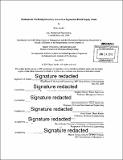| dc.contributor.advisor | Stephen Graves and David Simchi-Levi. | en_US |
| dc.contributor.author | Jacobs, Ryan (Ryan Lee) | en_US |
| dc.contributor.other | Leaders for Global Operations Program. | en_US |
| dc.date.accessioned | 2015-09-29T18:59:04Z | |
| dc.date.available | 2015-09-29T18:59:04Z | |
| dc.date.copyright | 2015 | en_US |
| dc.date.issued | 2015 | en_US |
| dc.identifier.uri | http://hdl.handle.net/1721.1/99028 | |
| dc.description | Thesis: M.B.A., Massachusetts Institute of Technology, Sloan School of Management, 2015. In conjunction with the Leaders for Global Operations Program at MIT. | en_US |
| dc.description | Thesis: S.M., Massachusetts Institute of Technology, Department of Mechanical Engineering, 2015. In conjunction with the Leaders for Global Operations Program at MIT. | en_US |
| dc.description | Cataloged from PDF version of thesis. | en_US |
| dc.description | Includes bibliographical references (page 69). | en_US |
| dc.description.abstract | Inventory is the largest asset on Nike's balance sheet-$3.9 Billion on May 3 1 st, 2014-and a key indicator of supply chain health. With new markets, products, and channels being added to Nike's sales portfolio each year, the environment in which Nike's supply chain must operate is becoming increasingly complex. Nike has responded to this complexity by splintering their supply chain into smaller segments, tailoring each segment to specific market and consumer needs. As a result of these market developments and Nike's organizational response, the task of understanding and predicting inventory movements has become increasingly challenging for Nike's business planning teams. This project creates an analytical method by which Nike can combine historical supply chain performance with sales forecasts to accurately predict future changes to company inventory levels. To achieve this goal and facilitate simple and flexible inventory predictions, a model was developed around the key segmentation dimensions that define Nike's supply chain. Use of this model enables Nike's senior management team to accurately predict movements in inventory due to product mix changes in the baseline sales forecasts. Additionally, the model provides Nike with a mechanism to evaluate sensitivity to forecast errors and the inventory costs associated with key strategic decisions to grow or shrink segments of their business. Preliminary results from the model over the time period FY15 - FY18 show a 2% increase in baseline inventory by the end of FY18 due both to growth in Apparel relative to Footwear and to growth in Direct-to-Consumer relative to Wholesale. This upward pressure on inventory leaves Nike in a precarious spot with Wall Street analysts who associate inventory growth relative to sales with poor marketplace performance. By carefully segmenting inventory, applying segment specific forecasts, and analyzing aggregated results through the use of the model, Nike can more accurately predict and explain movements in inventory to shareholders. | en_US |
| dc.description.statementofresponsibility | by Ryan Jacobs. | en_US |
| dc.format.extent | 70 pages | en_US |
| dc.language.iso | eng | en_US |
| dc.publisher | Massachusetts Institute of Technology | en_US |
| dc.rights | M.I.T. theses are protected by copyright. They may be viewed from this source for any purpose, but reproduction or distribution in any format is prohibited without written permission. See provided URL for inquiries about permission. | en_US |
| dc.rights.uri | http://dspace.mit.edu/handle/1721.1/7582 | en_US |
| dc.subject | Sloan School of Management. | en_US |
| dc.subject | Mechanical Engineering. | en_US |
| dc.subject | Leaders for Global Operations Program. | en_US |
| dc.title | Methods for predicting inventory levels in a segmented retail supply chain | en_US |
| dc.type | Thesis | en_US |
| dc.description.degree | M.B.A. | en_US |
| dc.description.degree | S.M. | en_US |
| dc.contributor.department | Leaders for Global Operations Program at MIT | en_US |
| dc.contributor.department | Massachusetts Institute of Technology. Department of Mechanical Engineering | |
| dc.contributor.department | Sloan School of Management | |
| dc.identifier.oclc | 921307122 | en_US |
